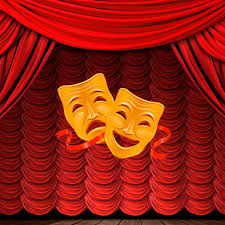Stamp: The building of Maly Theatre and Order of Lenin (Soviet Union, USSR 1949)
The building of Maly Theatre and Order of Lenin (Soviet Union, USSR 1949)
01 January (Soviet Union, USSR ) within release 10th Anniversary of Reunion of W.Ukraine and W.Belarus goes into circulation Stamp The building of Maly Theatre and Order of Lenin face value 40 Russian kopek
| Stamp The building of Maly Theatre and Order of Lenin in catalogues | |
|---|---|
| Michel: | Mi:SU 1394 |
Stamp is square format.
Also in the issue 10th Anniversary of Reunion of W.Ukraine and W.Belarus:
- Stamp - Coat of Arms of Byelorussian SSR face value 40;
- Stamp - Lenin's Mausoleum face value 40;
- Stamp - Vasily Williams (1863-1939), Russian and Soviet agronomist face value 25;
- Stamp - Soviet woman in Textile industry face value 20;
- Stamp - Soviet woman in Pre-school Education face value 25;
- Stamp - Soviet woman in the management of state affairs face value 40;
- Stamp - Women in Socialistic Agriculture face value 50;
- Stamp - Soviet schoolmistress face value 50;
- Stamp - Soviet woman in mass sport face value 1;
- Stamp - Stepan O. Makarov (1849-1904), Russian naval commander face value 40;
- Stamp - The Building Of Military medic academy face value 40;
- Stamp - S. Botkin, N. Pirogov, I. Sechenov & Military medic academy face value 50;
- Stamp - Miner with coal hammer face value 15;
- Stamp - Scientist at microscope face value 30;
- Stamp - Coat of Arms of the USSR face value 40;
- Stamp - Working people with May Day banner face value 40;
- Stamp - Soviet newspapers and works by Marx, Lenin, Stalin face value 40;
- Stamp - Alexander Popov, inventor of radio face value 40;
- Stamp - A.Popov shows the world's first radioset to admiral Makarov face value 50;
- Stamp - Alexander S. Pushkin (1799-1837), Russian author face value 25;
- Stamp - A.S. Pushkin among his friends in Kamenka face value 40;
- Stamp - Boldino State Literary Memorial and Museum of A. Pushkin face value 1;
- Stamp - Ivan Michurin (1855-1935), Russian botanist and selectionist face value 40;
- Stamp - Tugboat face value 40;
- Stamp - Vasily V. Dokuchayev (1846-1903), Russian geologist face value 40;
- Stamp - Vasily I. Bazhenov (1737/38-1799), Russian architect face value 40;
- Stamp - Alexander N. Radishchev (1749-1802), Russian author face value 40;
- Stamp - Khosta: Sanatorium of the Ministry of Communications face value 40;
- Stamp - Khosta: Sanatorium #3 of Trade unions of USSR face value 40;
- Stamp - Khosta: Sanatorium of power engineering specialists face value 40;
- Stamp - Zheleznovodsk: Sanatorium #41 of Trade unions of USSR face value 40;
- Stamp - Sochi: State Theatre face value 40;
- Stamp - Sochi: Frunze Sanatorium face value 40;
- Stamp - Makhinjauri: Sanatorium "Zelyony mys" of Trade Unions face value 40;
- Stamp - Kislovodsk: Sanatorium #1 of Trade unions of USSR face value 40;
- Stamp - Kislovodsk: Sanatorium #3 of Trade unions of USSR face value 40;
- Stamp - Ivan P. Pavlov (1849-1936), Russian physiologist face value 40;
- Stamp - The Globe belted with envelopes face value 40;
- Stamp - The Globe belted with envelopes face value 40;
- Stamp - Field-protective forestation face value 25;
- Stamp - Forest shelterbelts to collective farm fields face value 40;
- Stamp - Map of forest shelterbelts and field-protective forest face value 40;
- Stamp - Build ponds and reservoirs! face value 50;
- Stamp - Field-protective forestation face value 1;
- Stamp - Vasily I. Chapayev (1887-1919), Hero of Civil War face value 40;
- Stamp - Ivan S. Nikitin (1824-1861), Russian poet face value 40;
- Stamp - The building of Maly Theatre and Order of Lenin face value 40;
- Stamp - Maly Theater face value 50;
- Stamp - People's parade on Red square face value 40;
- Stamp - Cattle (Bos primigenius taurus), Sheep (Ovis ammon aries), M face value 40;
- Stamp - Gymnastics. Female gymnast on rings. face value 40;
- Stamp - Weightlifting face value 1;
- Stamp - Four-axle full-metal tramcar (MTV-82) face value 25;
- Stamp - Freight steam locomotive (class "L", config. 1-5-0) face value 50;
- Stamp - Coat of Arms and State Flag of the USSR face value 40;
- Stamp - Textile industrial complex. Cotton and trucks. face value 20;
- Stamp - Irrigation System face value 25;
- Stamp - The House of the Government of Tajik SSR in Stalinabad face value 40;
- Stamp - Medical college and Teacher's training college in Stalinabad face value 50;
- Stamp - Reunion of Western Byelorussia with Byelorussian SSR face value 40;
- Stamp - Worker with flag behind globe face value 40;
Stamp The building of Maly Theatre and Order of Lenin it reflects the thematic directions:
A culture is a way of life of a group of people--the behaviors, beliefs, values, and symbols that they accept, generally without thinking about them, and that are passed along by communication and imitation from one generation to the next. Culture is symbolic communication. --the behaviors, beliefs, values, and symbols that they accept, generally without thinking about them, and that are passed along by communication and imitation from one generation to the next. Culture is symbolic communication.
Architecture (Latin architectura, from the Greek ἀρχιτέκτων arkhitekton "architect", from ἀρχι- "chief" and τέκτων "builder") is both the process and the product of planning, designing, and constructing buildings and other physical structures. Architectural works, in the material form of buildings, are often perceived as cultural symbols and as works of art. Historical civilizations are often identified with their surviving architectural achievements.
The Medal of Honor (MOH) is the United States Armed Forces' highest military decoration and is awarded to recognize American soldiers, sailors, marines, airmen, guardians, and coast guardsmen who have distinguished themselves by acts of valor. The medal is normally awarded by the President of the United States (the commander in chief of the armed forces) and is presented "in the name of the United States Congress." It is often, not strictly correctly, referred to as the Congressional Medal of Honor
Theatre or theater is a collaborative form of performing art that uses live performers, usually actors or actresses, to present the experience of a real or imagined event before a live audience in a specific place, often a stage. The performers may communicate this experience to the audience through combinations of gesture, speech, song, music, and dance. It is the oldest form of drama, though live theatre has now been joined by modern recorded forms. Elements of art, such as painted scenery and stagecraft such as lighting are used to enhance the physicality, presence and immediacy of the experience. Places, normally buildings, where performances regularly take place are also called "theatres" (or "theaters"), as derived from the Ancient Greek θέατρον (théatron, "a place for viewing"), itself from θεάομαι (theáomai, "to see", "to watch", "to observe").
Art is a diverse range of human activities in creating visual, auditory or performing artifacts (artworks), expressing the author's imaginative or technical skill, intended to be appreciated for their beauty or emotional power. In their most general form these activities include the production of works of art, the criticism of art, the study of the history of art, and the aesthetic dissemination of art. The oldest documented forms of art are visual arts, which include creation of images or objects in fields including painting, sculpture, printmaking, photography, and other visual media. Architecture is often included as one of the visual arts; however, like the decorative arts, or advertising, it involves the creation of objects where the practical considerations of use are essential—in a way that they usually are not in a painting, for example. Music, theatre, film, dance, and other performing arts, as well as literature and other media such as interactive media, are included in a broader definition of art or the arts. Until the 17th century, art referred to any skill or mastery and was not differentiated from crafts or sciences. In modern usage after the 17th century, where aesthetic considerations are paramount, the fine arts are separated and distinguished from acquired skills in general, such as the decorative or applied arts.
A building or edifice is a structure with a roof and walls standing more or less permanently in one place, such as a house or factory. Buildings come in a variety of sizes, shapes and functions, and have been adapted throughout history for a wide number of factors, from building materials available, to weather conditions, to land prices, ground conditions, specific uses and aesthetic reasons. Buildings serve several needs of society – primarily as shelter from weather, security, living space, privacy, to store belongings, and to comfortably live and work. A building as a shelter represents a physical division of the human habitat (a place of comfort and safety) and the outside (a place that at times may be harsh and harmful).
In the visual arts, a cityscape (urban landscape) is an artistic representation, such as a painting, drawing, print or photograph, of the physical aspects of a city or urban area. It is the urban equivalent of a landscape. Townscape is roughly synonymous with cityscape, though it implies the same difference in urban size and density (and even modernity) implicit in the difference between the words city and town. In urban design the terms refer to the configuration of built forms and interstitial space.
An anniversary is the date on which an event took place or an institution was founded in a previous year, and may also refer to the commemoration or celebration of that event. For example, the first event is the initial occurrence or, if planned, the inaugural of the event. One year later would be the first anniversary of that event. The word was first used for Catholic feasts to commemorate saints. Most countries celebrate national anniversaries, typically called national days. These could be the date of independence of the nation or the adoption of a new constitution or form of government. The important dates in a sitting monarch's reign may also be commemorated, an event often referred to as a "Jubilee".







